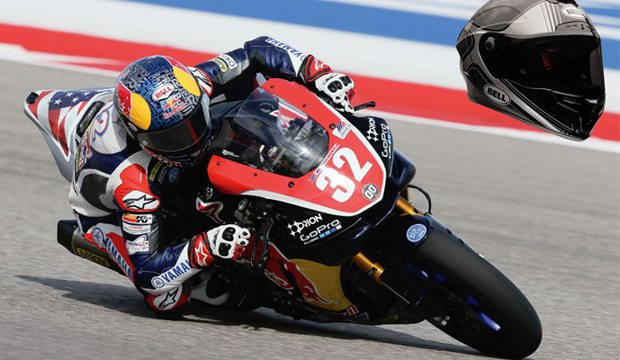Sports & Rec Applications
From the waters of the most intense boat races in the world to the Super Bowl gridiron, almost every sport has found an application for carbon or glass fiber composites. Composite can be used to upgrade sports equipment used to protect athletes or to upgrade the venues that host the games themselves.
Composites Reduce Weight of Helmet That Protects Motorcyclists

- Application: Motorcycle racing helmet
- Scope: CFRP helmet shell reinforced with carbon fiber fabric
- Year Introduced: 2015
- Volume: Bladder molding
Thin, lightweight helmet reduces neck fatigue for riders
Motorcycle racing makes big demands on an athlete’s body. With riders traveling in excess of 150 mph, even a small reduction in the weight of protective equipment can make a big difference on how they feel after a 45-minute race.
Helmet manufacturer Bell PowerSports has taken advantage of advanced composite technology to reduce the weight of its top-of-the-line motorcycle racing helmet by 21 percent. To make its new Pro Star, Bell took its own Flex Impact Liner technology and combined it with a CFRP helmet shell joined to a lightweight carbon fiber fabric called TeXtreme®.
Oxeon, the manufacturer of TeXtreme, designed the fabric with a high count of straight carbon fibers; with less crimp in the fibers, there are fewer spaces the resin needs to fill as the fibers are bonded together. That helps reduce the fabric’s weight.
Oxeon manufactured the CFRP shell with its TeXtreme liner using bladder molding (also called internal pressure molding). To develop the finished product, Oxeon performed multiple tests to see how lightweight the helmet could be while still meeting the necessary safety and performance requirements. “The unexpected part was how thin we could make the shell and still have it perform,” says Dave Kolosek, Oxeon’s North American sales manager. The Pro Star helmet did well in Bell PowerSports’ own cold and hot impact tests as well.
Some of the strength of the Pro Star helmet comes from the multiple layers of lightweight plies that it incorporates. Kolosek said that many thin layers are better at deflecting impacts than fewer, thicker plies of the same overall depth. In addition, because the helmet shell was so thin, Bell was able to add more padding foam to its interior. Even a few millimeters of extra foam increases safety, Kolosek says. If the rider does have an accident, the lighter weight of the Pro Star helmet should help offset rotational forces, which often cause brain injuries.
